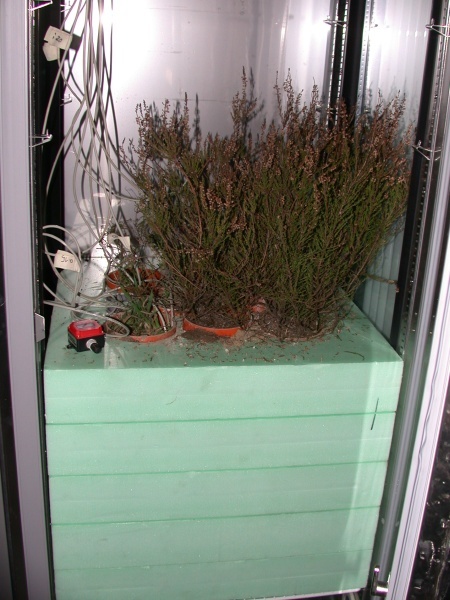EVENT 7
 |
| EVENT 7: Calluna in Climate Chamber |
Climate warming is expected to shorten the duration of winter. However, in temperate grasslands, increased temperature variability and changes to cold acclimation cues could challenge plants by exposing them to frost at times when they are not fully cold acclimated. In particular, basal meristems of grasses at the soil surface are vulnerable to air temperature extremes if there is reduced snow cover, and the latter is predicted for temperate regions with climate warming.
When challenged by climate extremes, genetic variation within populations or dispersal from other populations enables species to persist at a specific location. High inter-specific variation in frost toler-ance can alter species composition if dispersal of frost tolerant ecotypes is limited. Therefore, the future composition of temperate grasslands will depend on the balance between inter- versus intraspecific variation in frost tolerance in an altered climate, yet very little data are available on this topic.
 |
| EVENT 7: Working with the binokular |
Here, we compare inter-versus intraspecific variation in the responses of grassland plants to winter climate change. Specifically, we examine
(1) plant responses to variation in the frequency and intensity of soil freeze thaw cycles,
(2) cold acclimation responses to warmer winters of shorter duration, and
(3) deacclimation and frost vulnerability in response to mid-winter thaw events,
in controlled-environment chamber experiments. We focus on inter-specific variation within German grassland species as compared to ecotypic variation within a single species on a continental scale.

